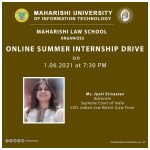About the RSBY Scheme and the Scam

In 2008, the government launched the ambitious scheme of Rashtriya Swasthya Bima Yojna (RSBY) however with advent of 2010, the scheme comes under media attention due to infamous “Uterus Scam” unearthed under it. There are gross violations of the medical ethics causing misuse of the RSBY scheme, so much that now it is both under legal scanner and media debate. The Uterus Scam under RSBY is making news in Bihar. There are people who are approaching courts for appropriate relief while suo moto action of the State Human Rights Commission is appreciable. The Medical Council to has become active after the whole thing came to light. RSBY, which was launched in early 2008 initially, designed to target only the Below Poverty Line (BPL) households, but has been expanded to cover other defined categories of unorganised workers.

The family of Below Poverty Line (BPL) means whose information is included in the district BPL list prepared by the State government.

The premium cost for enrolled beneficiaries under the scheme is shared by Government of India and the State Governments (75%: 25%). However this sharing pattern changes to 90%:10% in case of North Eastern States and Jammu & Kashmir. The beneficiary has to pay a fee of Rs. 30/- every year at the time of enrolment. Apart from this, the Central Government also pays the cost of smart card which is Rs. 60/- which is included as cost of the premium. The beneficiaries contribution of INR 30/- is used by the State Nodal Agency (SNA) to meet their administrative expenses. This Rs. 30/- is adjusted from the premium share of State Government/UT when the payment is done to the insurance company The program has the target to cover 70 million households by the end of the Twelfth Five Year Plan (2012-17). Since 1st April 2015, the Scheme RSBY has been transferred to Ministry of Health & Family Welfare on “as is where is” basis. Ministry of Health & Family Welfare is administering and implementing the scheme through a decentralized implementation structure at the State level.
RSBY has two fold objectives:
- To provide financial protection against catastrophic health by reducing health cost.
- To improve access to quality health care for below poverty line households of pocket expenditure for hospitalization and other vulnerable groups in the unorganized sector
But before the RSBY becomes known for the benefits for which it was inaugurated it is in news in middle of its implementation period for the infamous “Uterus Scam”. The article focuses on legal developments around the scam and role of regulator in this article and insight into the scheme.
A. About the Uterus Scam
The family eligible for insurance benefits needs to come to the enrolment station, and the identity of the household head needs to be confirmed by the authorized Government official. Women belonging to below poverty line families were given health insurance policies worth Rs 30,000 under the RSBY launched in 2008. The scam was exposed as per news report when Samastipur District Magistrate Kundan Kumar, organised special medical camps to re-examine the women, after the administration-received complaints about bogus or unnecessary surgeries. According to a Times of India report, 16,765 cases of hysterectomy had been performed in 11 districts between 2010 and 2012. Districts such as Samastipur, Begusarai, Madhubani and Saran had reported large number of such cases.

B. Legal Developments
In August 2012, the Bihar Human Rights Commission took suo motu action of the reports that talked about the irregularities in the implementation of RSBY. The panel sought a report from the state government and an expert committee was formed, following Chief Minister’s directive. The committee report has identified 540 victims and has granted compensation ranging from 1.5 lakh to 2.5 lakh, on the basis of their age. Details about 123 other cases are still not out and the age of 168 victims is yet to be established.
The Bihar Human Rights Commission (BHRC) has awarded Rs 18 crore compensation to 708 women victim whose uteruses were removed under the Rashtriya Swasthya Bima Yojana in 2012 by `doctors’ to siphon off money they claimed through the medical insurance scheme. Steps should be taken to remove such people from the healthcare system and added the commission expected the Medical Council of India to look into the matter “thoroughly, fairly and squarely”.
A petition has been filed by Veterans’ Forum for Transparency in Public Life, before the Patna high court wherein the Court had also directed the state government to take action against the officials involved in the scam. The scam pertains to unwanted removal of uterus of 703 women to extract money allotted under Rashtriya Swasthya Bima Yojana (RSBY) in at least 12 districts of Bihar in 2012. FIRs have already been registered against 13 accused doctors. The state government, through respective DMs, had asked the MCI to cancel registration of 17 hospitals and 33 accused doctors. While the then DMs of Saran and Samastipur had issued the order way back in 2013, other DMs wrote to the MCI in April 2016.
The Bihar representative of MCI’s ethics committee claimed that the matter was reported to the council only a year back. The MCI plans to take action against the accused doctors “soon”. Meanwhile, petitioner’s counsel in the high court, Dinu Kumar, said if the MCI delayed in taking action against the doctors, a fresh petition would be filed. Strangely, two hospitals of Saran district- Jeevan deep hospital and Narendra Tripathi Nursing Home – against whom FIRs were registered in 2013 for committing “criminal fraud” and taking undue benefit of RSBY, had been selected by the state labour department for RSBY registration in 2015. Accordingly, the central government cleared the names of the two hospitals on the recommendation of the state government. The petition, which was disposed of by the high court last week, had also questioned the basis on which the two hospitals were selected for RSBY services. It also contended that the hospitals were not registered under Clinical Establishments (Registration and Regulation) Act (CEA), which was adopted by the state government in 2013.

The matter is still sub-judice.
C. Role of Medical Council of India, the Regulatory Body
The Regulations called the Indian Medical Council (Professional conduct, Etiquette and Ethics) Regulations, 2002 in the clause below identify principal objective of the medical profession.
“1.2.1 The Principal objective of the medical profession is to render service to humanity with full respect for the dignity of profession and man. Physicians should merit the confidence of patients entrusted to their care, rendering to each a full measure of service and devotion. Physicians should try continuously to improve medical knowledge and skills and should make available to their patients and colleagues the benefits of their professional attainments. The physician should practice methods of healing founded on scientific basis and should not associate professionally with anyone who violates this principle. The honoured ideals of the medical profession imply that the responsibilities of the physician extend not only to individuals but also to society.”
The Medical Council of India is the parent body which has major role in regulating the code of ethics for the noble medical profession. However, the role of regulator also comes to scanner of public eye in any such scenario wherein nobility of the profession is comprised at any stage by handful of people. A special mention of the judgment of the High Court of Judicature at Bombay in writ petition number 11429 of 2012 (A.S) in Dr. Shalik Bhaurao vs. MCI & Ors. wherein common question was challenge to the orders of MCI and Maharastra Medical Council (MMC) against the Petitioner doctors for breach of professional code of ethics arose. Appreciating the following important laws about the power and role of MCI, the court arrived at the ratio of the judgment in the matter which needs mention to understand power of MCI especially when such scam arises.
- Medical Register:Indian Medical Council Act, 1956 (“IMC”) was enacted to provide for the re-constitution of Medical Council of India and the maintenance of Medical Register for India and the definition is found in section 2 of the Act.
- Board of Governors: Section 3A of the IMC Act deals with the power of the Central Government to supersede Medical Council to constitute Board of Governors.
- Committees: Section 9 (1) of the IMC Act provides for to empower the MCI to constitute from amongst its members and Executive Committee and such other committee for such general or special purpose, as the MCI may deem necessary for the purposes of the Act.
- Recognition of Degrees and College: Section 10B and 10 C of the IMC Act provide for recognition of the medical qualifications and granting permissions for establishment and continuation of medical colleges. The recognition of the Medical qualification granted by the University and the Medical institutions in India are covered under section 11 to 13 of the MCI Act.
- Professional Ethics: Section 20A of the IMC Act provides how it is the discretion of the Medical Council to set standards of professional conduct and etiquette and a code of ethics for medical practitioners.
- Accountability to Society: The profession of medicine encompasses its practice, teaching and administration. The performance and conduct of the professional must be such as would not only prove his/her skills and competence but must show that he is truly worthy of the respect of the students, patients and general public. He must earn by exemplary qualities and nobility. Hence in all capacities the professional is accountable to his peers and society.
- Entry of Names in Indian Medical Register: The Section 23 of the IMC Act and the Registrar of the Council may on receipt of the report of the registration of a person in a State Medical Register or on application made in the prescribed manner by such person enter the name of the person in Indian Medical Register.
- Removal of Name from Register: A perusal of the provision Section 24 of the IMC Act provides if the name of the person enrolled in State Medical Register is removed therefrom under the power conferred by or under the law relating to the registration of the medical practitioners in force in State, the Medical council shall direct removal of name of such person from Indian Medical Register. Removal can be on ground of professional misconduct or any other ground except the requisite medical qualifications. Apart from possessing the power from removal of name of a person from Indian Medical Register, the MCI does not interfere with independent working of the State Medical Council but that does not mean the Council cannot take action against the patent violations or violations of professional ethics and code of conduct.
- Regulations: Medical Council (Professional conduct, Etiquettes and Ethics) Regulations, 2002 made by MCI in exercise of powers conferred under the IMC Act with the previous approval of the State Government.
- Ambit of MCI: Merely because a power is conferred in the State Medical Council to register a medical practitioner in the State Medical Register does not mean that the concerned medical practitioner or doctor is not subject to the regulatory measures or control of council.
- Benefits of Registration: There is an obligation on both the Medical Council and the State Medical Council to update and upkeep the medical registers so that enrolment of a medical practitioner is made properly enabling him to carry on his professional activities throughout the country. Such provisions are for the benefit of medical practitioners in the registers is made properly enabling him to carry on his professional activities throughout India.
Conclusions
The most apt conclusion with Uterus Scam coming into limelight and the role of hospitals and doctors under investigation is found in the case of Sukumar Mukherjee vs. State of West Bengal and Ors. (AIR 1993 SC 2335), wherein the Hon’ble Court observed as under:
“Every teacher-doctor must endeavour to make his institution a brighter institution – a fragment of Heaven on earth, an El Dorado of peace, joy and wisdom. After all, an institution is what its teachers and Professors make it even as a nation is what is patriots make it, a religion is what its prophets make it and a home is what its women make it. Without a band of devoted men of medicine who are inspired by a holy zeal, an institution with the paraphernalia of modern conveniences will be like without the spark of life; without soul. When there are all the advantages, it is no virtue if tolerable work alone is turned out. But it is only when there are handicaps, mocking at enterprise should the human spirit triumph and establish that the Will is an all-conquering force. The greatest men of medicine of the past and the present who have profoundly influenced men’s minds have been indomitable spirits who have struggled against tremendous odds.
Inner strength, which is not cowed down by adversities, is what is required. If that noble quality is to be nurtured one must have tremendous faith in one’s mission. To practise medicine is not a craft but a calling; not a profession but a vocation.
Sincerity of purpose and earnestness of endeavour are the two wings that will bear one aloft to the tower of success. Given these virtues, other qualifications will follow of their own accord.
It is a cold and irresistible fact of logic that doctors exist for the institution and that the institution does not exist for their convenience and profit. It sustains and nourishes them, and it is up to them to cling to it with steadfast loyalty and to toil to promote its highest interests.
“From good to better, daily self-surpassed”, has to be our motto. The nature of the profession is such that it definitely demands a spirit of service and sacrifice. After all what lends dignity to any person is his attitude to work and not the emoluments of his office.
“Honour and shame from no condition rise act well thy part : there all the honour lies.” The duty of a true teacher-doctor is to instruct, inspire and illumine.”












